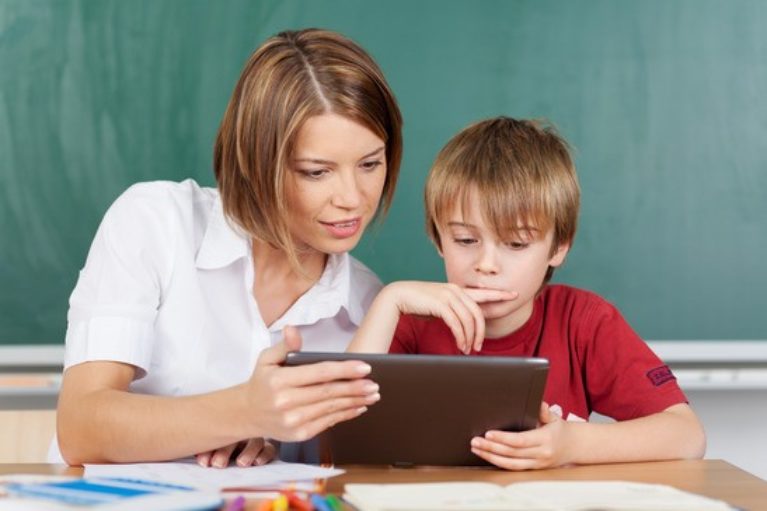3 Ways Technology Can Help Students with Autism
Digital tools have the power to help students with learning disabilities communicate and gain confidence.
It is a statistic that most Americans would probably be stunned to find is so prevalent: One of out every 68 kids in the United States is on the autism spectrum, according to data from the Centers for Disease Control and Prevention. While it’s true that most children these days are considered “digital natives,” children with autism spectrum disorder (ASD) also find themselves most comfortable with a device in their hands.
In an article for the Indiana Resource Center for Autism, author Kristie Brown Lofland notes that children with ASD are visual learners, which means technology can be a valuable tool in the learning process.
“Technology just makes visual images more accessible to the individual with ASD. Computer graphics capture and maintain their attention,” Lofland writes.
More importantly, technology has the power to help these children achieve confidence in social situations. In a 2015 Huffington Post article on how technology is aiding children with ASD, special educator Kathryn deBros said technology is a powerful, assistive tool for students struggling with socialization.
“A huge part of going to school is learning how to navigate social situations,” deBros told Huffington Post. “[Students with ASD] are totally lost without a roadmap. Technology has been huge in allowing them to bridge that gap between them and the other kids.”
From apps to robots, here are three ways technology can help students with ASD become confident learners.
1. Increase Verbal Skills with Apps
Autism Speaks, an autism science and advocacy organization that funds research and increases awareness, reported that about 25 percent of people with ASD are largely nonverbal. Others are identified as low-functioning communicators.
For such students, there are apps called “visual scene displays” that are most assistive for children struggling with verbal skills, according to Jules Csillag, a speech-language pathologist who focuses on special ed tech. Csillag told Huffington Post that as teachers become more comfortable with technology, they can “customize a curriculum for students” with autism.
On such app, SceneSpeak, creates interactive displays and stories with text-to-speech voices added to narrate scenes. Another app, Speech with Milo, helps children develop storytelling skills by creating an interactive storybook.
2. STEM Abilities Improve Social Skills
Research from 2012 conducted by Washington University in St. Louis found that of the students with an ASD that went to college, 34 percent of them chose to pursue a STEM major.
The Los Angeles-based STEM3 Academy, a school developed for K–12 students with ASD, Asperger Syndrome and ADHD, provides a robust STEM-based curriculum to help these students have a richer school experience. Their “flipped classroom” model has students working collaboratively on projects using computer-aided design programs, 3D printers and robotics during class time.
“Our students learn by doing, experiencing and constructing rather than just sitting in a classroom listening to a teacher,” Ellis Crasnow, the school’s director, says in an article on CNN Money.
By developing their natural abilities with technology — which lends itself to project-based learning — students at the STEM3 Academy are also engaging socially with other students and have shown improved interaction with their own parents.
Terry Whiteside told CNN Money that her son had opened up since enrolling in the tech school.
“Before, he wouldn’t talk much about his day. Now, he comes home and has conversations with me about what he did at school,” she says.
3. Digital Tools to Promote Confidence
Confidence goes hand-in-hand with improved social skills. In the Huffington Post article, deBros says that students with ASD are often intimidated by the social aspects of classrooms. That is, until they are given technology.
Earlier this summer, online pop culture website Mashable reported about Aspect Hunter School in Australia, a pre-L to grade 6 school exclusively for children on the autism spectrum. Instructors there use Sphero robots to encourage students to explore outside of their comfort zones — and outside of the classroom.
“It’s almost like they were brave and overcame their anxieties for the sake of showing Sphero,” Craig Smith, the school’s deputy principal, told Mashable.


 by
by 




Leave A Comment